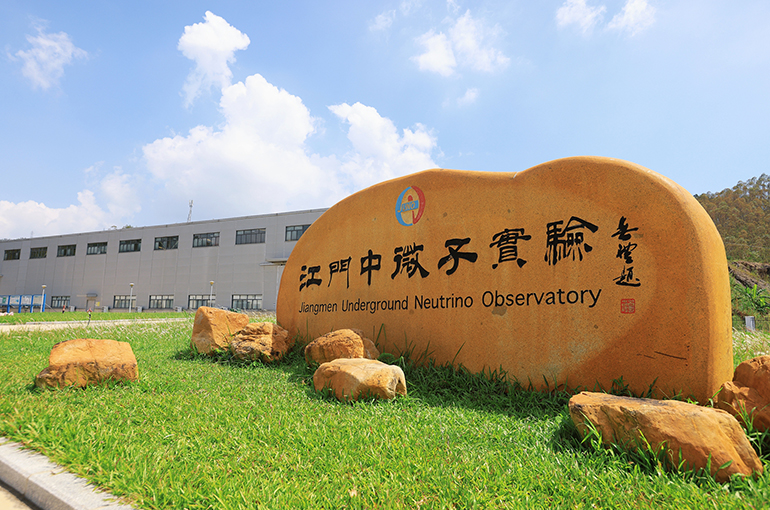 JUNO Team Releases First Achievement About Neutrino
JUNO Team Releases First Achievement About Neutrino(Yicai) Nov. 19 -- The world's largest transparent spherical neutrino detector in south China's Guangdong Province reported its first achievement on Wednesday, marking a major step of its decade-long construction.
In a press conference held in Guangdong's Jiangmen by the Institute of High Energy Physics (IHEP) of the Chinese Academy of Sciences (CAS), IHEP deputy director Wen Liangjian presented the first physics result by the Jiangmen Underground Neutrino Observatory (JUNO).
Using 59 days of effective data after the start of operation on Aug. 26 this year, JUNO has already measured two of the solar neutrino oscillation parameters with a factor of 1.5 to 1.8 better precision than previous experiments, said Wen, also the physics analysis coordinator of the JUNO Collaboration.
The two parameters, originally determined by solar neutrinos, can also be precisely measured by reactor antineutrinos. Earlier results from the two approaches showed a mild 1.5-sigma discrepancy, known as the solar neutrino tension, hinting at a possible new physics theory.
"Achieving such precision within only two months of operation shows that JUNO is performing exactly as designed," said Wang Yifang, JUNO project manager and spokesperson.
"With this level of accuracy, JUNO will soon determine the neutrino mass ordering, test the three-flavour oscillation framework, and search for new physics beyond it," Wang added.
Since neutrinos rarely interact with ordinary matter, they can easily zip through our bodies, buildings, or even the entire Earth without being felt, earning them the nickname "ghost particles." Due to their elusive nature, neutrinos are the least understood fundamental particles, requiring massive detectors to capture their faintest traces.
At the heart of JUNO is a liquid-scintillator detector with an unprecedented mass of 20,000 tonnes, housed at the center of a 44-meter-deep water pool. A 41.1-meter-diameter stainless steel truss supports the 35.4-meter-diameter acrylic sphere, the liquid scintillator, over 45,000 photo-multiplier tubes (PMTs) and many other key components such as cables, magnetic shielding coils and light baffles.
When passing through the detector, neutrinos have a small chance of bumping into the hydrogen nuclei in the liquid, triggering extremely faint flashes, which can be detected by the surrounded PMTs and then converted into electrical signals.
JUNO is a major international collaboration led by the IHEP. The project involves more than 700 scientists from 75 institutions across 17 countries and regions. Proposed in 2008 and approved by the CAS and Guangdong Province in 2013, JUNO began underground construction in 2015 and started taking data in August 2025.
The CAS vice president Ding Chibiao said at the press conference that JUNO is a major international collaborative project in fundamental scientific research that brings together global expertise. The project demonstrates China's commitment to the principles of openness, cooperation, and mutual benefit for international partnerships.
"As Chair of the JUNO Institutional Board, I am proud to see this global effort reach such a milestone. JUNO's success reflects the commitment and creativity of our entire international community," said Marcos Dracos at the University of Strasbourg and National Center for Scientific Research in France.
JUNO is designed to determine the neutrino mass ordering and measure oscillation parameters with sub-percent precision. It will also study solar, atmospheric, supernova and geoneutrinos, and search for physics beyond the standard model of particle physics.
"JUNO will continue to produce important results and train new generations of physicists for decades to come," said Cao Jun, director of IHEP and JUNO deputy spokesperson.